I recentlyvisited a native plant sale at Matthaei Botanical Gardens. My interest in planting natives has grown exponentially this year as I read books such as Jessica Wallister’s Attracting Beneficial Bugs to Your Garden, and Bringing Nature Home by Doug Tallemy.
These authors make the case that planting natives is a good idea for several reasons:
- They attract pollinators in greater numbers than non-native plants do.
- They have evolved with the environment and are therefore built to thrive in it.
- They require less care and are resistant to disease.
- Once established, they require very little watering.
- Having the beneficial insects in your garden that natives attract makes pest control much less of an issue.
The right question might be, “Why NOT plant what brings birds, bees, butterflies, and other insects to your garden?” It’s a lot more interesting when they are there!
Some people think native plants are ugly. It may be true that some of them have a weedy look, but clean edges and a tended look will alleviate that problem.
Here are photos and descriptions of five of the new natives that are now in my garden. I think it’s pretty safe to say that none of these plants is ugly:
Buttonbush is a shrub that grows in moist conditions, and ultimately gets to be five to seven feet tall and almost as wide. It can be even taller. What I like best about it are these ping-pong-ball-sized blossoms. They look like little space ships to me.
All I have read says this plant is a butterfly and bee magnet. I am eager to see just how the bees go about getting nectar and or pollen from this interesting-looking bloom.
Right now in my garden, the buttonbush is only about a foot tall, and quite narrow, too. But in two or three years time, it will be a showpiece.
I have hybrid monarda in my garden now. In mid- to late summer, the bees really have a party on these plants. At times, I have sat on a nearby bench and counted 20 or more buzzing around. They also attracthummingbirds and butterflies.
This new monarda is in a different location and has complicated blooms of a different color. I especially like the dotted lower petals.
Native Indians used dotted monarda, otherwise known as horsemint, for all sorts of medicinal purposes.
I am particularly excited about this plant. It reminds me of delphinium and baptisia, but should require far less care. It grows naturally in moist, rich soil and appreciates light shade.
Recently a storm blew down a limb of an ancient Rose of Sharon in Serendipity Gardens, leaving a slightly less shady spot that needed plants. This is where the Great Blue Lobelia are. The location seems just right, plus I’ll have a view of them outside the kitchen window. They bloom in late summer into fall.
The official name, lobelia siphilitica, came about because the plant was once used to treat venereal disease. It’s an interesting addition to the garden, for sure, for multiple reasons.
This plant, according to information on the Prairie Moon Nursery website, is a member of the Campanula family. Campanula rotundifolia does well in rocky soils and crevices, and often seeds itself in retaining walls.
A curious bit of history is associated with its common name. Some say the name alludes to an ancient association with witches, suspected of transforming into hares.
Harebell may also be referred to as Bluebell Bellflower. It blooms in the spring and sporadically through the summer. Honestly, how could it be much more beautiful?
How can you not love a plant with a name like “Pearly Everlasting”?
The plant is officially anaphalis margaritacea. Its unusual common name comes from two sources. “Everlasting” refers to the fact that you can easily preserve the flowers by cutting them, hanging them upside down, and leaving them to dry. “Pearly” is derived from the plant’s species name, margaritacea, which means ‘pearl-like’.
Pearly everlasting can tolerate moist conditions (so long as the drainage is good) and some shade, so you can grow it in a number of places.
According to the North American Butterfly Association, the caterpillars of the American Lady Butterfly use pearly everlasting as a host plant.
Of course, these plants in Serendipity Gardens do not look like these photos now. They are mere seedlings. I look forward to the day when they come into maturity and add their beauty to the garden as well as attract more wildlife.
Have you considered planting some new natives in your garden?
Like this post? Sign up to receive an email each time a new post is available. We will never loan, sell or rent your email address — that’s a promise! Please use the buttons below to share with others.
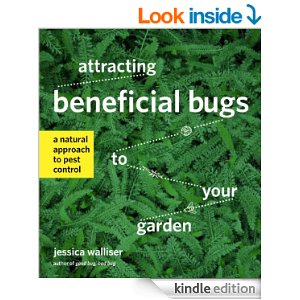

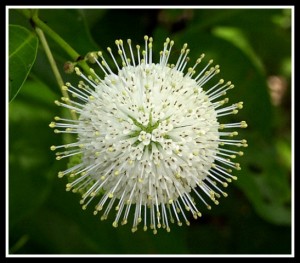
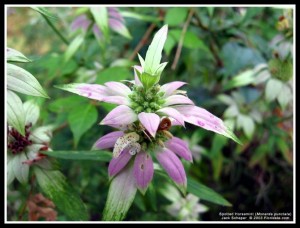
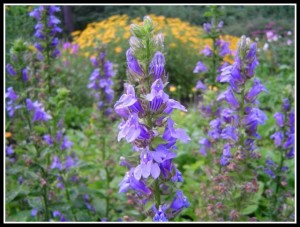
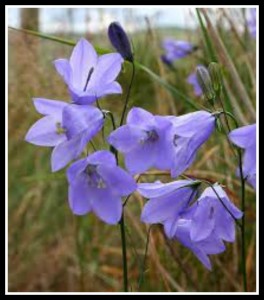
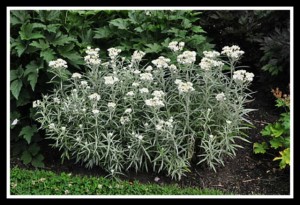
I’ll bet they look quite different next season!